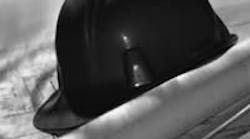"We have made progress, but it is a journey," began Bill Hilton, director of health and safety for Georgia-Pacific, describing the papermaker's ongoing transformation from a compliance-focused culture, with too many people still being injured on the job, to a safety-focused culture.
Georgia-Pacific was a far better workplace than many others of its peers, and that made it harder to see the reasons for moving to an inherent safety culture, Hilton said. But there were not zero injuries.
"Safety was a priority," Hilton said, "not a shared value. You can change priorities, and downgrade them in the order of importance. You can't do that for values."
First, he noted, you have to have dissatisfaction with the current state. He and his team did employee surveys and found a variety of attitudes toward safety. "Be faster than the machine!" was one of the most prevalent. "I saw a worker across the room raise his thumb and forefinger and wave. It wasn't a special football sign; he'd lost the three other fingers on that hand. He wasn't faster than the machine."
"Our vision is to make safety a shared value such that no one is ever injured." Georgia-Pacific's Hilton discussed how the company has made safety more than just a priority.
Other excuses and attitudes included, "I'm all for safety first, as long as I can still bypass the safeguards"; "We don't need to guard the machine, because we do it differently than other mills do"; "Perimeter guards will ruin production"; and "I can't believe we're keeping the machine down just for safety stuff." Hilton said that he heard these statements not only from the line workers but from the leadership level, too.Today his team is responsible for creating a vision of a better state. His guiding principles include integrity, compliance, value creation, principled entrepreneurship, customer focus, knowledge, change, humility, respect and fulfillment. "Value creation starts by earning the right to operate our facilities by demonstrating the ability to manage health, safety and environmental performance with excellence every day," he said.
Expectations start with leadership. "Safety is an outcome of the process. Working safely is much more than just not getting hurt," Hilton said. "And you must have accountability. You need to be able to recognize, anticipate and manage risk."
Hilton added, "Our vision is to make safety a value, shared by each of our employees for themselves and their co-workers. That enables us to operate facilities such that no one is ever injured."
There are some strategies to accomplish this, he noted. First, create a positive culture based on the guiding principles. Second, identify hazards and manage risk continuously. Third, use a management system to organize the safety effort. Focus on the right leading indicators (such as near hits, etc.), and leverage best practices throughout the organization.
That's harder than you'd think, because the legacy culture was "mill against mill" and if one mill came up with a better "best practice" they'd try hard to keep it to themselves for the sake of advantage over the other mills. Now the company measures and incentivizes for "most best practices devised and shared," he said.
Finally, Georgia-Pacific had to have the belief that it could get to that state where it was in a safety culture. "Some of the things we've done are to replace dangerous physical inspection by video, remote vibration analysis, and other safer means," Hilton said. "Risk reduction is everybody's job, and the workers will start contributing as soon as they realize that safety is a value—for real."
Georgia-Pacific employees now say that they believe the company is a safer place to work than it was three to five years ago, Hilton said. The majority of employees believe most managers and supervisors are truly committed to safety. Most employees believe that production is not valued over safety. Employees recognize the significant amount of money and resources that the company has invested in safety. Employees say they can shut down equipment or stop a job if they believe it is unsafe. Most employees say that there is no double standard for safety.
"We've made some progress," Hilton said, "but this is a journey. Some of us got with the program. The others aren't with us anymore."




